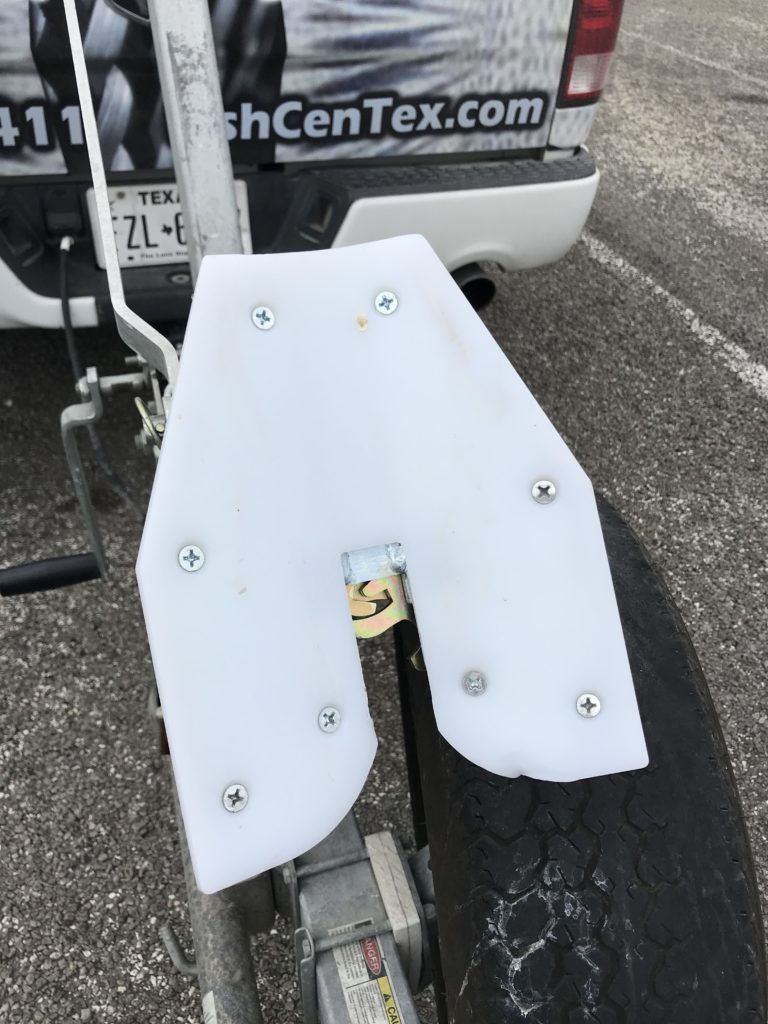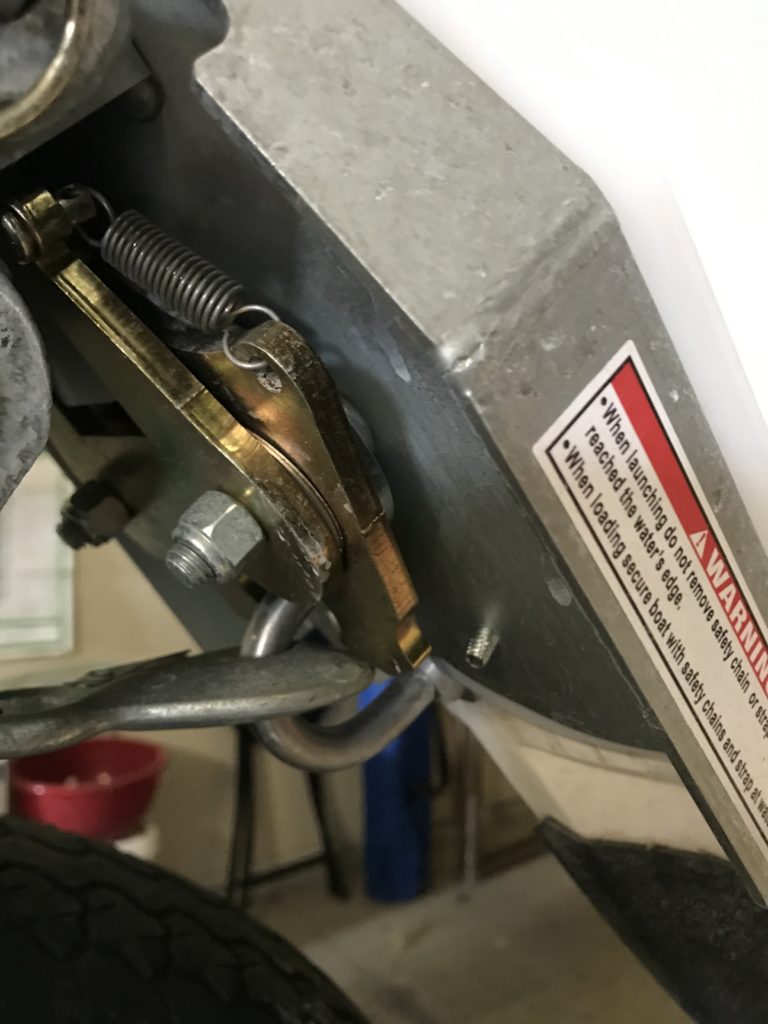This is a “cut and paste” from my article in the KDH 2 weekends ago. Wish I’d installed this years ago!!
By Bob Maindelle | For the Herald Oct 27, 2019
Back on Sept. 8, I wrote about a simple device which makes launching my boat when I am unaccompanied much easier and quicker.
I got a great amount of feedback on that article, and many who contacted me asked the logical question, “Do you have an easy way to load your boat back onto your trailer, as well?”
The answer is “Yes.”
After doing a good bit of research online, reading online reviews, watching numerous YouTube videos and more, all focused on the various commercially available automatic boat latching systems on the market, I decided to purchase a Drotto Catch-N-Release Boat Latch.
After deciding on the Drotto device, I also spoke with Darren Dressen, the owner of the company which produces the device, Drotto Products. Dressen, from South Dakota, was a pleasant fellow who found necessity to be the mother of invention.


HOW IT WAS BEFORE
As with many V-hulled boats, my boat would do one of two things when I drove it up onto my trailer at the conclusion of a fishing trip. Either the boat would stop short of the bow eye overlapping the bow roller (typically if the trailer was just a bit too shallow), or the bow eye would seat, as desired, just overlapping the bow roller while the outboard was in forward gear, but would then roll backwards away from the bow roller once I put the motor in neutral (typically if the trailer was backed in just right, or a bit too deeply).
Either scenario created some hassle as it would leave the boat a few inches too far back on the trailer, thus requiring that I manually crank the boat further up onto the trailer using the winch. On boats with rollers (versus bunkboards) this would have to be done before pulling the boat out of the water, lest the boat roll rearward and wind up partially or fully off the trailer.
This involves stepping over the bow or laying down and reaching under the bow to latch the winch strap hook onto the bow eye and hand-cranking the winch to prevent the boat from rolling back.
HOW IT IS NOW
With the Drotto device now installed, and with the trailer backed into the water, I now simply center my boat on the trailer and drive the boat slowly forward onto it, allowing my guideposts and bunkboards to center the boat and bring it to a stop on the trailer about two to three feet short of its final position.
With the outboard steered directly forward, I goose the throttle to create enough forward thrust to slide the boat forward on the trailer, thus moving the bow eye into the slick alignment plates on the Drotto device. The device then guides the bow eye so as to make direct contact with the latching mechanism which then activates, bringing the two halves of the clamping mechanism together around the bow eye.
When the mechanism positively latches, it makes a distinctive sound loud enough to be heard over the noise of the outboard, so there is no doubt the boat is securely latched in place.
The boat is now locked in place on the trailer and will not go any farther forward, nor will it slip backward.
I then simply turn off the motor, trim it up, step out of the boat, get into my tow vehicle and pull out of the water. For safety, I still attach the winch strap and tie-down straps after clearing out of the ramp area.
THE NEXT LAUNCH
After securing the boat onto the trailer with the Drotto device, and before launching the next time, I simply push upward on the release arm of the Drotto device. This opens the jaws of the clamping mechanism, leaving only the winch strap hook attached to the bow eye. From there, the launch procedure is no different from launching without the device installed.
INSTALLATION WAS EASY
One of the main features of the Drotto device which led me to choose it over similar devices was the simplicity of installation. After launching the boat to give me room to work around the bow eye, I removed the through-bolt which held my bow roller in place and replaced the bow roller with the Drotto device, leaving it loose enough to be able to be repositioned by hand.
I then backed the trailer into the water to a normal loading position and drove the boat forward until it made contact with the Drotto device. The device was pushed into proper position by the shape and movement of the bow of the boat. I then tightened the device with a pair of ¾-inch wrenches, thus making this the final mounted position of the Drotto device.
Next, I attached the release arm using a single nut and bolt, tightened with a half-inch wrench. The release arm allows the clamping mechanism to be opened prior to launching the next time. In 15 minutes’ time, the installation of the device and release arm was complete.
Bow rollers typically come in two sizes, 3-inch or 3.75-inch. Once you determine the width of your bow roller, you can order the correct model of Drotto for your trailer. The device is offered in powder-coated black or in galvanized steel.
IS IT RIGHT FOR YOU?
If the boat loading issues I described above are what you encounter, then the Drotto device will overcome these issues. Typically, V-hulled boats and/or trailers with rollers will benefit most from the Drotto device. Although some bass boat hull and trailer combinations may benefit from such a latching device, most bass boat hulls are flat enough to prevent rolling backward once they are snugged up on the trailer such that the bow eye overlaps the bow roller on the winch block.
Flat-bottomed boats and trailers are not compatible with the Drotto device.
I do want to point out that I paid the retail price for this device, which was around $260. I did not get any breaks or discounts. I am not on the company’s pro or field staff, and I have no business relationship with Drotto Products. As with other fishing-related gear that I have reported on in this column, I have chosen to share this information about the Drotto device with you because, after much use, it has proven to be a time-saving, durable device which makes my fishing experience more enjoyable by reducing hassles at the boat ramp after the fishing is concluded.

